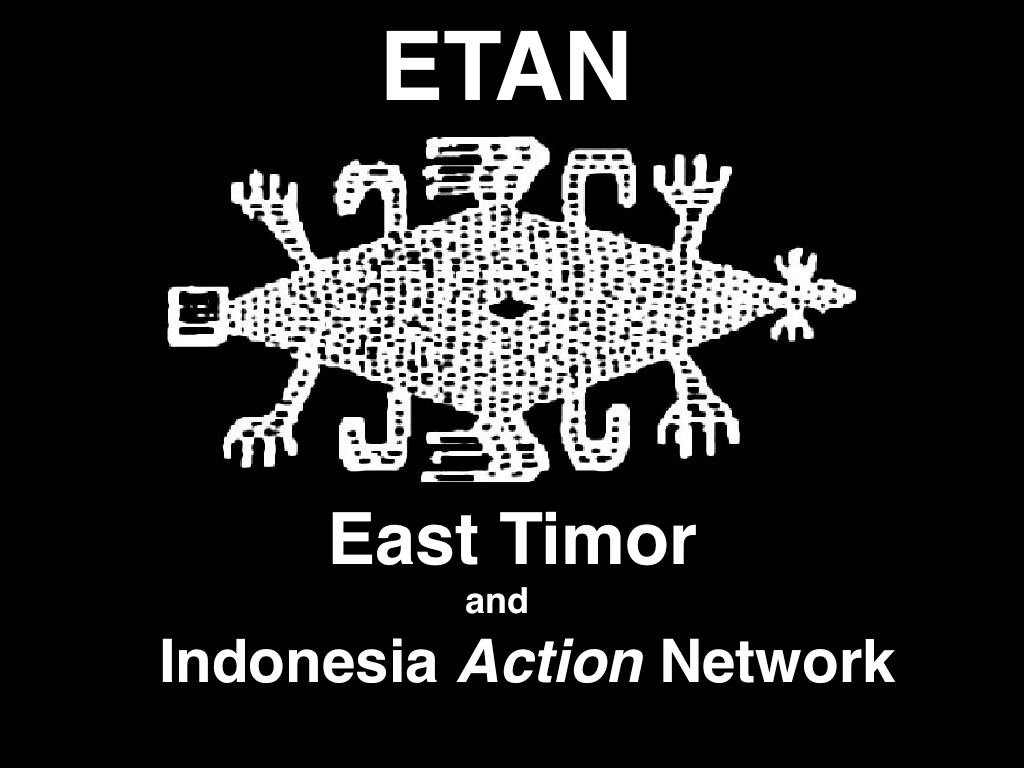
Excerpts from the Testimony of Allan Nairn before the United States Senate Committee on Foreign RelationsFebruary 27, 1992
Terror more intense As it happened, the delegation never arrived in East Timor, but the army staged a massacre anyway. Within days after the postponement of the visit was announced, the army stormed the seaside church of San Antonio de Motael. I arrived in Dill a few hours after the attack, and later spoke with numerous eyewitnesses. During the attack the soldiers seized a young man named Sebastiao Gomes. They executed him at point blank range with a pistol shot to the gut. Gomes was one of a number of young men who had sought sanctuary in the church. He had been hunted by the army during the pre-delegation sweeps. Gomes' funeral attracted a crowd of more than a thousand people. The Timorese were clearly shaken by this attack on their flagship church. The two-week commemoration of Gomes' death took place on November 12. It began with the traditional morning mass at the Motael and continued with a procession to lay flowers on Gomes' grave. It should be noted that the Catholic Church is the only Timorese institution. All others have been obliterated on orders of the army high command. There are no Timorese unions or press, peasant leagues, political parties, or student groups. Their leaders have been executed and their existence banned. Timorese have been jailed and tortured for reading newspapers from overseas or attempting to listen on short wave to Radio Australia or the BBC. Social organization can only take place under the army's control. Public speech and assembly are prohibited by army fiat. This means that the civic life of the East Timorese must be conducted underground. Gomes's funeral was a breakthrough event because people turned out and dared to speak. Some held up their hands in the sign of the "V" and shouted "Viva East Timor." The commemorative procession on November 12 was even larger and more outspoken. As the mass broke up people assembled on the street. The army intelligence chief drove by. Along the route of march there were soldiers and police, who carefully eyed the passing Timorese. This time a number of people were carrying hand-lettered banners supporting the church and the cause of Timorese independence. The banners said things like "Indonesia, Why You Shoot Our Church?" One was a plea addressed to "President Busch." There were young men, young women, children in Catholic school uniforms, and old people in traditional Timorese dress. As the procession wound through Dili, many other people joined, they came from schools and offices and huts along the road. Sometimes young boys would break into a jog and older men would reign them in shouting "Disciplina!' "Disciplina!' People were chanting and giving the "V' sign and talking among themselves.(1) By the time it reached the cemetery the crowd had grown quite large. There were perhaps three thousand to five thousand people. Some filed in toward Sebastiao's grave, and many others remained outside, hemmed in on the street by cemetery walls. People were, at that point, standing around, talking excitedly among themselves, when, suddenly, someone noticed that one of the exit routes had been sealed off by an Indonesian troop truck. Soldiers without end But as we stood there watching as the soldiers marched into our face, the inconceivable thing began to happen. The soldiers rounded the corner, never breaking stride, raised their rifles and fired in unison into the crowd. Timorese were backpedaling, gasping, trying to flee, but in seconds they were cut down by the hail of fire. People fell, stunned and shivering, bleeding in the road, and the Indonesian soldiers kept on shooting. I saw the soldiers aiming and shooting people in the back, leaping bodies to hunt down those who were still standing. They executed schoolgirls, young men, old Timorese, the street was wet with blood and the bodies were everywhere. As the soldiers were doing this they were beating me and Amy; they took our cameras and our tape recorders and grabbed Amy by the hair and punched and kicked her in the face and in the stomach. When I put my body over her, they focused on my head. They fractured my skull with the butts of their M-16s. The soldiers put us on the pavement and trained the rifles at our heads'. They were shouting "Politik! Politik!" We were shouting back, "America! America!,' and I think that may have been the thing that saved us. They had taken my passport earlier but Amy showed them hers, and the soldiers seemed impressed when they realized that we were indeed from the States. We were, after all, citizens of the country that supplied them with Mol6s. For whatever reason, the soldiers chose to let us live. We hopped a passing truck and got away. The soldiers were still firing as we left the scene, some five to ten minutes after the massacre began. This was, purely and simply, a deliberate mass murder, a massacre of unarmed, defenseless people. There was no provocation, no stones were thrown, the crowd was quiet and shrinking back as the shooting began. There was no confrontation, no hothead who got out of hand. This was not an ambiguous situation that somehow spiraled out of control. The soldiers simply marched up in a disciplined, controlled way and began to fire massively on the crowd. It was quite evident from the way the soldiers behaved that they had marched up with orders to commit a massacre. They never issued a warning, they did not even pause or break their stride: they marched up and opened fire in unison. This action was not the result of their interaction with the crowd: the Timorese were just standing there or trying to get away. The soldiers opened fire as soon as their column turned the corner and got within a dozen yards of the Timorese. After the Timorese had been gunned down the army sealed off the area. They turned away religious people who came to administer first aid. They let the Timorese bleed to death on the road. (1) Indonesia later said that, during the course of the march, a soldier was stabbed by a Timorese in front of the military district command base. I saw, from about a hundred feet away, a brief scuffle near the base, but it did not look to me at the time as if anyone had been stabbed. After most of the marchers had already passed and the last Timorese were passing by, a few soldiers came out and began to beat some marchers with sticks. I saw other marchers then come to their defense, throwing some stones at the soldiers and at nearby government buildings. The scuffle broke up very quickly- within about 45 seconds -- and the marchers continued on their way. Likewise, although there were many soldiers and police who watched the encounter as I did, they did not join in or react in any way. Neither did the soldiers or the police who lined the remainder of the parade route. The march continued to the cemetery without incident, and the massacre happened more than a half hour later. After the massacre, Chris Wenher, the video cameraman who was inside the cemetery, was imprisoned by the police and held for more than six hours, during which time he talked frequently with his captors. He says he asked them repeatedly why the army had staged the massacre, but that at no point did they say that any stabbing had taken place. The entirety of the Senate Testimony of Allan Nairn on the Santa Cruz massacre is available from ETAN in the form of a pamphlet. More on the the Santa Cruz massacre |

